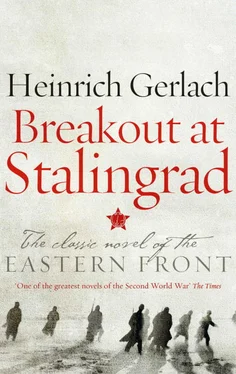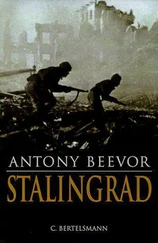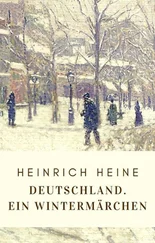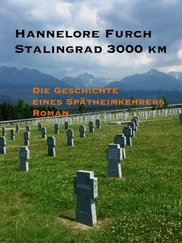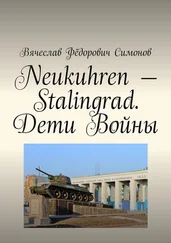Christmas 1945 passed without incident. Nor did the following months, up to May, bring any changes. Gerlach took a wryly amused view of the preparations for 1 May 1946, which included decking out the meeting hall with banners printed with typical Soviet slogans like ‘Long Live the First of May, the Day of Struggle for All Workers’. Five days later, on 6 May, he was no longer in Lunyovo, but en route to Labor Camp 190 in Vladimir, some 190 kilometres east of Moscow and 25 kilometres away from Camp 160 at Susdal, where he had spent part of 1943. A personal data file for Gerlach, with the registration number 1848 and dated 25 July 1946, confirms his arrival in Vladimir. Before his surprise relocation, Gerlach had passed a rough plan of his Stalingrad novel, outlining its basic structure and chronology, to General von Seydlitz. Gerlach was convinced that Von Seydlitz was about to be released. He could not have known at this point that the general would only return to Germany as one of the last war captives in October 1955, more than five years after his own homecoming.
After his move, Heinrich Gerlach was initially put to work doing heavy labour on a road-building project, during which he stayed at the camp in Susdal. A labour camp was a new experience for him. Up to now, he had lived a privileged life in captivity. He knew that regular prison camps discriminated according to service rank, with the enlisted men receiving the worst treatment where both accommodation and food were concerned. The situation in camps for officers was different, where in observance of the Geneva Convention the inmates were not obliged to work, at least at first. The ‘generals’ camps’, such as that at Voikovo, were the exception, not the rule. In Vladimir, it became abundantly clear to Heinrich Gerlach that most POWs’ lives were not played out in the sort of facilities he’d known hitherto, but in these hard labour camps. And he registered with alarm that, in the Soviet Union under Stalin, there was a widespread conviction that ‘where the organization of these labour camps was concerned, they had created something quite special and progressive. A visiting card from a new world that was rewriting the history of mankind afresh.’ A chill ran down Gerlach’s spine when he realized that ‘these labour camps reflected Soviet reality. That was the thing. That was the worst aspect.’
But once again fate dealt kindly with Gerlach the war captive. When the subsidiary camp was dissolved in the summer of 1946, Gerlach was transferred to the main camp 190/1 at Vladimir. After a few weeks there, he was offered the post of editor of the wall newspaper by the camp’s political instructress. She was familiar with several of his contributions to Free Germany . And it was a fortunate coincidence that this political instructress at Camp 190/1 in Vladimir just happened to be one Mishket Liebermann, a relative of the renowned German Impressionist painter Max Liebermann. She had been living in the Soviet Union since the late 1920s. After a brief engagement at the Deutsches Theater in Berlin, she had travelled to the Soviet Union for the first time in 1927, where she got to know Sergei Eisenstein, director of the (even then) famous film Battleship Potemkin (1925).
In April 1929, Mishket Liebermann made her way to Russia once more, journeying to Minsk in Belorussia via Moscow. She obtained a position at the Jewish Theatre in the city and made her debut in Ernst Toller’s drama Hoppla, Wir leben! ( Hoppla, We’re Alive! ), the play that had marked the opening of the famous German director Erwin Piscator’s agitprop theatre on Nollendorfplatz in Berlin two years earlier. Following a brief spell back in Berlin just before the Nazis seized power, she promptly returned to the Soviet Union. Around that time, Erwin Piscator was establishing a collective theatre in Dnepropetrovsk, a kind of itinerant company involving several exiled German actors, among them Erwin Geschonneck and Mishket Liebermann. When the Nazis invaded the Soviet Union in 1941, she began visiting German POW camps, and became responsible for political education.
At first Gerlach gave her a wide berth and shunned any involvement with the camp’s wall newspaper; he simply had no desire to trot out political slogans any more. However, Mishket Liebermann reassured him that the anti-fascist bloc politics being enacted in the Soviet Occupation Zone were not about communist agitation. And when, in October 1946, Gerlach received the first indications that his wife Irmgard was alive and well, his whole outlook changed. Now, all he wanted was to get by as best he could and return home to Germany and his family. Accordingly, from November 1946 he produced the wall newspaper for Camp 190/1 and could build on the support of his German political instructress. And it was she, too, who retrieved the manuscript of Gerlach’s Stalingrad novel, which had meanwhile found its way on to the desk of the camp commandant.
Gerlach was thus exempted from having to work outside the camp, which could well have meant hard labour. The major role the wall newspaper played in camp life was due in large measure to the importance that was accorded to the written word, and indeed to art and literature as a whole in the Soviet Union; this was very much in line with the attitude of Stalin, who in 1932 famously called writers ‘engineers of the human soul’. Gerlach treated recurrent themes of captivity in his contributions: daily life in the camp, restitution, promotion of high productivity, cultural work, news from the Soviet Occupation Zone, information on the policies of the Socialist Unity Party and its newly established youth wing, the Free German Youth (FDJ), developments in global politics, and experiences within the Soviet Union. While Mishket Liebermann returned to East Berlin in 1947, Heinrich Gerlach still remained behind at the POW camp, despite the fact that a large number of German prisoners and other interned Germans had been repatriated over the course of the year. According to the latest Russian sources, a total of around 221,329 German soldiers and 33,182 internees had been released by that stage. Camp Number 69 in Frankfurt an der Oder acted as a central transit camp.
Despite his privileged position, Gerlach found the situation increasingly unbearable. Secret service men from the Ministry of Internal Affairs ordered him to compile reports on his comrades. In response, Gerlach took the only honourable course of action, divulging everything to those he was required to write about, and submitting innocuous reports in which he praised their efforts for peace and restitution and emphasizing their anti-fascist disposition. It ultimately dawned on him how the rules of the NKVD worked: ideally, everybody was expected to report on everyone else. But the security officers weren’t remotely interested in gathering information; rather, they were after something else: ultimately, this was all a grand exercise in betrayal! But Gerlach had established some clear boundaries for himself; in his view, there was a line that one should not cross and where a refusal to cooperate was the only possible answer.
It is hardly surprising that we initially found nothing in Gerlach’s personal dossier to indicate that the Soviet secret service agencies made any attempt to influence him. Instead, I came across a postcard from Germany, sent by the regional authority for Berlin Wilmersdorf, whose offices were located in the city’s Charlottenburg district, postmarked 3 April 1948 and addressed to Heinrich Gerlach in Camp No. 2989. Why, I asked myself, should a postcard have been sent to Camp 2989? In April of that year, Gerlach was in Camp 190 in Vladimir. The solution to this supposed confusion was simpler than I thought: the number 2989 actually referred to the hospital at Kameshkovo in the Vladimir region, where Gerlach had been admitted after breaking his foot. The postcard contained an important piece of information:
Читать дальше
